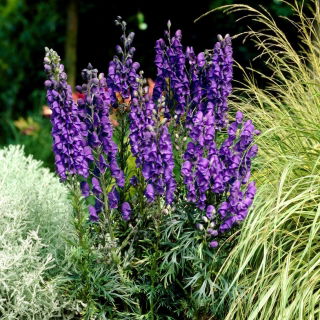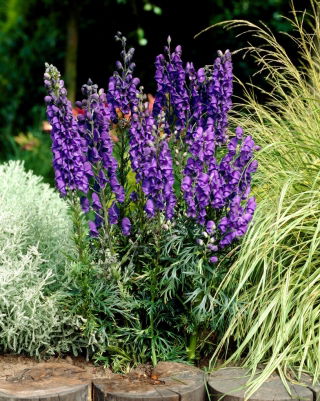- US Dollars ($)
- Euro (€)
- GB Pound (£)
- Chinese Yuan (元)
- Swedish krona (kr)
- Russian ruble (₽)
- Hong Kong dollar (HK$)
- Norwegian krone (kr)
- Indian rupee (₹)
- New Taiwan dollar (NT$)
- Danish krone (kr)
- Hungarian forint (Ft)
- Saudi riyal (SR)
- Bulgarian lev (лв)
- Czech koruna (Kč)
- Israeli shekel (₪)
- Indonesian rupiah (Rp)
- Japanese yen (¥)
- Korean won (₩)
- Malaysian ringgit (RM)
- Romanian leu (leu)
- Swiss franc (Fr.)
- Serbian dinar (din)
- Vietnamese đồng (₫)
- Ukrainian hryvnia (₴)
- Turkish lira (₺)
- Thai baht (฿)
- CAD Dollars ($)
- English
- German - Deutsch
- French - Français
- Spanish - Español
- Italian - Italiano
- Swedish - Svenska
- Russian - Русский
- Norwegian - Norsk
- Danish - Dansk
- Nederlands
- Estonian - Eesti keel
- Finnish - Suomalainen
- Hungarian - Magyar
- Latvian - Latviešu valoda
- Lithuanian - Lietuvių
- Portuguese - Português
- Bulgarian - български
- Czech - Čeština
- Croatian - Hrvatski
- Romanian - Română
- Slovak - Slovák
- Slovenian - Slovenščina
- Categories
-
Seeds
-
Vegetable Seeds
-
Flower Seeds
-
- Ageratum, Flossflower seeds
- Alyssum seeds
- Amaranth Seeds
- Aquilegia, Columbine seeds
- Aster seeds
- Aubrieta Seeds
- Begonia seeds
- Bellis perennis, Daisy seeds
- Californian Poppy Seeds
- Campanula, Bellflower seeds
- Celosia, Cocksbomb seeds
- Centaurea, Cornflower seeds
- Chrysanthemum, Painted Daisy seeds
- Coleus seeds
- Convolvulus seeds
- Coreopsis seeds
- Cosmos seeds
-
- Datura seeds
- Dianthus, Carnation seeds
- Echinacea, Coneflower seeds
- Flower seed mixtures
- Forget me not seeds
- Foxglove seeds
- Gaillardia Seeds
- Gazania seeds
- Geranium, Pelargonium seeds
- Godetia seeds
- Gourd, Ornamental squash seeds
- Gypsophila, Baby's Breath seeds
- Hollyhock seeds
- Impatiens seeds
- Ipomoea, Morning glory seeds
- Calabash, Bottle Gourd seeds
- Larkspur, Delphinium seeds
-
- Limonium, Statice seeds
- Lobelia seeds
- Lupin, Lupine seeds
- Lychnis, Catchfly seeds
- Mallow Seeds
- Marigold, Tagetes seeds
- Milkweed Seeds
- Nasturtium seeds
- Nemesia seeds
- Nepeta, catmint seeds
- Nicotiana, Ornamental Tobacco seeds
- Nigella, Love in a mist seeds
- Pansy seeds
- Petunia and Surfinia seeds
- Phlox seeds
- Poppy seeds
- Primula, Primrose seeds
-
- Red Valerian, Centranthus Seeds
- Ricinus, Castor bean seeds
- Runner bean seeds
- Safflower seeds
- Salvia, Ornamental sage seeds
- Snapdragon Seeds
- Stock seeds
- Strawflower, Golden everlasting seeds
- Sunflower seeds
- Sweet pea seeds
- Tunbergia, Black-eyed Susan Vine seeds
- Verbascum, Mullein seeds
- Verbena seeds
- Veronica, Speedwell seeds
- Viola, Violet seeds
- Zinnia seeds
-
- Herb Seeds
- Sprouting Seeds
-
Flower Bulbs
-
Garden Equipment
-
At home
- Around home
-
Fertilizers
-
- All-purpose fertilizers
- Autumn and winter fertilizers
- Blueberry fertilizers
- Boxwood fertilizers
- Bulb plants' fertilizers
- Grass and lawn fertilizers
- Citrus plant fertilizers
- Compost
- Conifer fertilizers
- Dolomite and lime fertilizers
- Dry powder fertilizers
- Fertilizers for balcony and terrace plants
- Fertilizers for moss-infected lawns
- Fertilizers in pump sprayers
-
- Fertilizers in watering cans
- Fertilizers sticks
- Fertilizers with leaf shine
- Flowering plant fertilizers
- Fruit fertilizers
- Fruit tree fertilizers
- Garden plant fertilizers
- Gel fertilizers
- Geranium fertilizers
- Green plant fertilizers
- Herb fertilizers
- Home plant fertilizers
- Hydrangea fertilizers
- Lavender fertilizers
-
The blue-flowered monkshood (Aconitum) is a perennial plant of the buttercup (Ranunculaceae) family. It is a truly remarkable decoration of summer beds that can be easily grown in the garden. Aconite looks great in combination with other species that have similar site requirements. A monkshood tuft develops a rosette of dark green feathery palmate leaves. The long racemous inflorescences that sit atop tall stems are the main ornamental value of this plant. A single flower is zygomorphic and its distinct upper petal, called the galea, is formed like a helmet. The blue-coloured racemes adorn the stalks for a very long time (August - September). The mature plants grow 100 to 130 centimetres tall.
The site for monkshood cultivation should be well lit, yet not directly exposed to sunlight. This plant feels well in partial shade. It requires a humous, loam soil that is also permeable, moderately moist and rich in nutrients. It will also thrive, however, on less fertile ground. The watering is needed during drought. This plant winters in the ground and tolerates hot weather well.
Plant the aconite rootstocks in spring, in April and May. Set them 40 to 50 centimetres apart and 10 centimetres deep. Aconite grows well on one site for circa 4 years. After that time split the rootstocks in autumn and transfer them to another place.
Monkshood is considered a valuable flower bed plant. It comes in particularly handy in creating of tall natural compositions with hollyhocks and larkspurs. You can also grow it alongside buildings, fences and walls. In partially shady spots it will harmonize with ferns, hostas and Japanese anemones.
Please take into consideration that aconite is a highly toxic plant. Standard gardening work or touching the leaves and flowers should not pose any danger. Always treat monkshood plants with utmost care. The seeds and roots are extremely toxic. That is why we recommend to plant aconite in spots that are hardly accessible for children and pets. The special substances that this plant contains are still used in herbal medicine and homeopathy. The properly applied - only by professionals - monkshood brings relief for pain, decreases hyperaemia in the membranes of the respiratory tract and prevents from arthritis. The trace doses act as a sedative and help in panic and asthma attacks.
In order to guarantee full safety, perform all maintenance measures on this plant in special protective gloves.
The price quoted above is valid for 1 first choice root set. The essential plant information and basic growing instructions can be found in the packaging information.
- Use: ornamental - garden
- Growth form: erect
- Flower colour: blue
- Vegetation form: perennial
- Foliage: dark green feathery palmate leaves.
- Flower type: zygomorphic, gathered in racemes
- Site: bright, not directly exposed to sunlight; humous, loam, permeable, moderately moist soil rich in nutrients
- Bulbs: 1
- Height: 100 to 130 cm
- Flowering period: August - September
- Planting period: April - May
- Planting depth (cm): 10 cm
- Planting distance (cm): 40 to 50 cm
- Wintering in the ground?: Yes
New


My account
Store
Customer information
Information

© -2025 Gardenseedsmarket.




